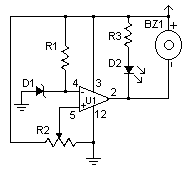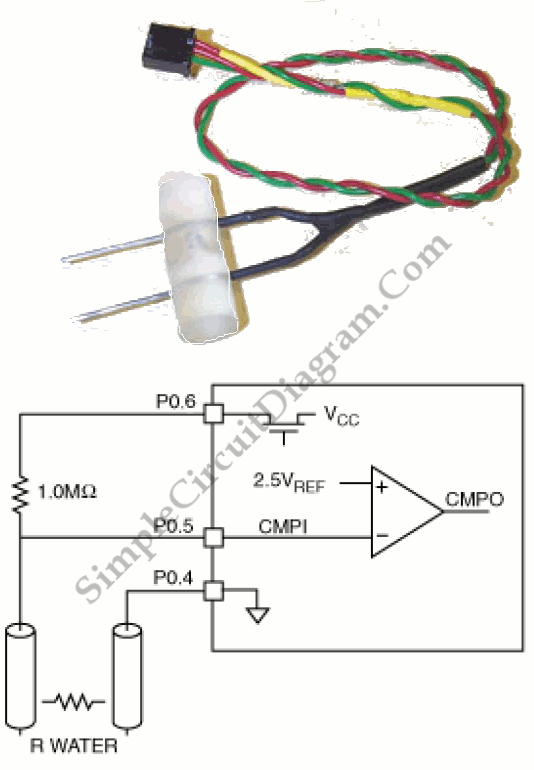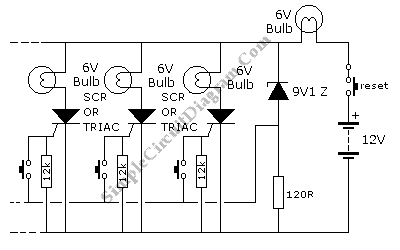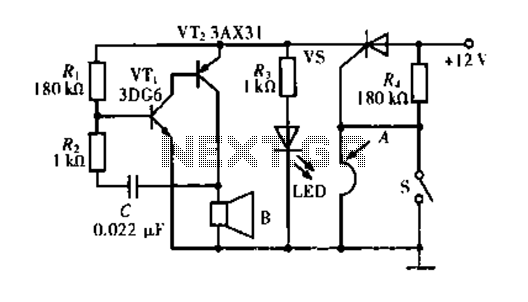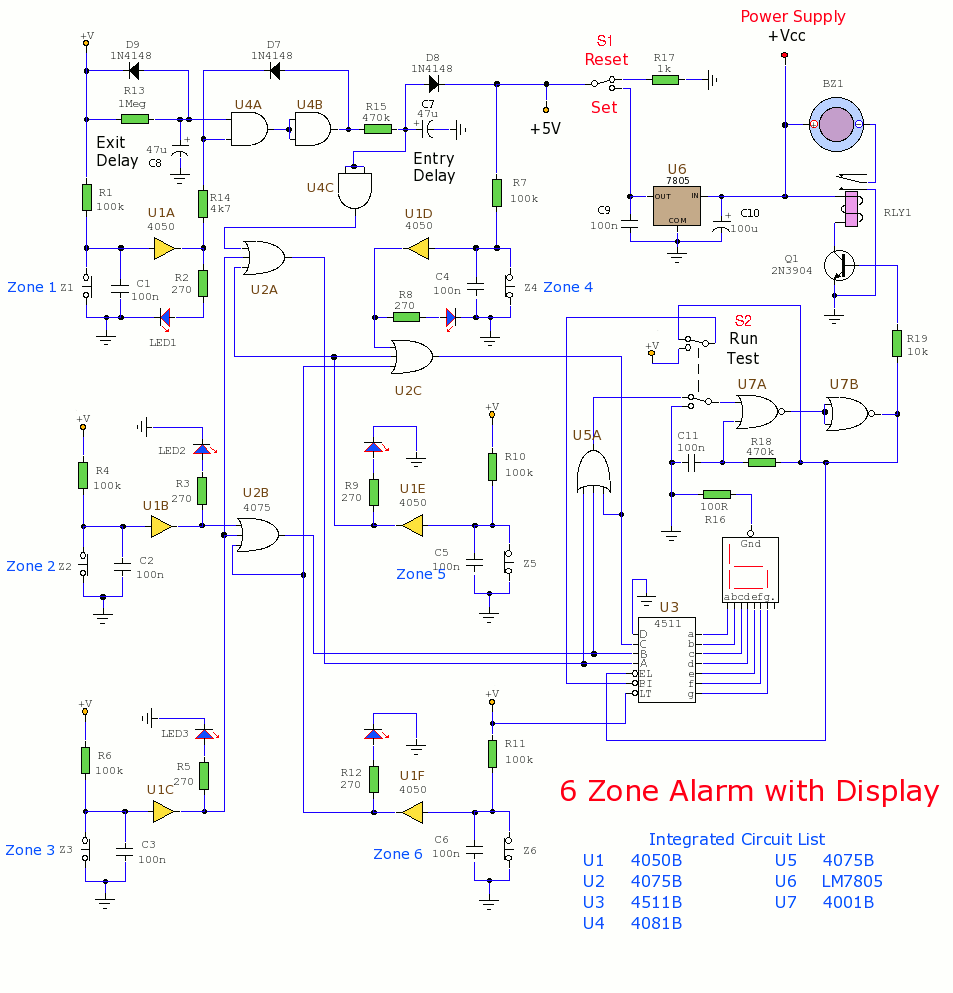
Water Level Sensor/Detector/Monitor With Alarm

This schematic diagram illustrates a water level sensor, detector, and monitor circuit. An alarm is also integrated into this circuit. It is designed to detect any fluid with a resistance below 900K ohms.
The water level sensor circuit typically employs conductive probes or electrodes that are placed at various levels within a tank or reservoir. When the water level rises to a certain point, the conductivity between the probes changes, triggering the sensor. The circuit can employ a comparator or a microcontroller to monitor the resistance values of the fluid.
In this specific design, the alarm system is activated when the resistance of the fluid drops below the specified threshold of 900K ohms. This could indicate the presence of water or another conductive liquid, signaling the need for attention. The alarm can be a simple buzzer or a more complex sound system, depending on the application requirements.
Power supply for the circuit is typically provided through a DC source, ensuring that the sensor and alarm components operate reliably. Additional components such as resistors, capacitors, and possibly a relay may be included to condition the signal and control the alarm output effectively.
The schematic may also include safety features, such as diodes to prevent back EMF from damaging sensitive components, and filtering capacitors to stabilize the power supply and reduce noise. Overall, this circuit serves as a practical solution for monitoring water levels in various applications, including industrial tanks, aquariums, or home water systems.This schematic diagram shows a water level sensor/detector/monitor circuit. An alarm is also featured in this circuit. Any fluid with a resistance under 900K.. 🔗 External reference
The water level sensor circuit typically employs conductive probes or electrodes that are placed at various levels within a tank or reservoir. When the water level rises to a certain point, the conductivity between the probes changes, triggering the sensor. The circuit can employ a comparator or a microcontroller to monitor the resistance values of the fluid.
In this specific design, the alarm system is activated when the resistance of the fluid drops below the specified threshold of 900K ohms. This could indicate the presence of water or another conductive liquid, signaling the need for attention. The alarm can be a simple buzzer or a more complex sound system, depending on the application requirements.
Power supply for the circuit is typically provided through a DC source, ensuring that the sensor and alarm components operate reliably. Additional components such as resistors, capacitors, and possibly a relay may be included to condition the signal and control the alarm output effectively.
The schematic may also include safety features, such as diodes to prevent back EMF from damaging sensitive components, and filtering capacitors to stabilize the power supply and reduce noise. Overall, this circuit serves as a practical solution for monitoring water levels in various applications, including industrial tanks, aquariums, or home water systems.This schematic diagram shows a water level sensor/detector/monitor circuit. An alarm is also featured in this circuit. Any fluid with a resistance under 900K.. 🔗 External reference
Warning: include(partials/cookie-banner.php): Failed to open stream: Permission denied in /var/www/html/nextgr/view-circuit.php on line 713
Warning: include(): Failed opening 'partials/cookie-banner.php' for inclusion (include_path='.:/usr/share/php') in /var/www/html/nextgr/view-circuit.php on line 713
